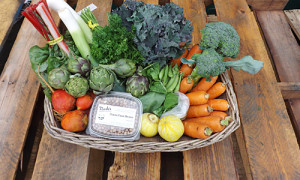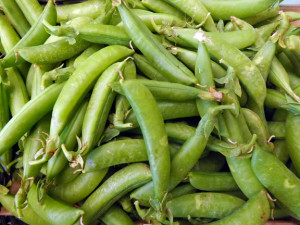Week 6, August 15
Both boxes have: Leeks, Nash’s red kale, bulk cylinder or golden beets, basil
The Small box also has: Diana fava beans, curly parsley, juice carrots
The Standard box also has: Lemon cucumbers, red chard, sugar snap peas, globe artichokes, broccoli
Quick note—
Small box members should check last week’s newsletter for tips on how to clean, soak and prepare Diana fava beans. These beans are nutritional powerhouses and one of the best sources of vegetable protein you can find. If you don’t still have last week’s newsletter, check out our new Farm Share Blog or nashsorganicproduce.com.
Weed Exchange
Do you have a friend or neighbor who might be interested in exchanging their time weeding for farm fresh veggies? Please pass the word about our Weeding Work Exchange Program. The details are online at Nash’s website. After a brief orientation, weeders can come and go on their own time.
How to Clean Leeks
Leeks are related to garlic and onions, but have a unique flavor all their own. Don’t believe recipes that claim you can only use the white part of the leek. Nash’s organic leeks are sweet and tender from white root to green tip. If you find cutting the upper part of the green leaves difficult, discard just the outer ones and use the tender inner ones.
Because of the way leeks grow, dirt sometimes gets in between the layers. Slice the leek lengthwise and pull it open under running water. Let the water get into all the layers to flush out any dirt particles.
Leeks go incredibly well with chicken, veggies and eggs (think quiche!), and also partner beautifully with mushrooms. Potato-leek soup is a classic, but how about roasted cauliflower-leek soup? Check our Recipe Blog for more leek recipes.
Cylinder Beets
Bred for restaurant and canning kitchens, cylinder beets are ideal grated raw on salads, in juices, as quick refrigerator pickles, roasted, and in soups. You can also cut them lengthwise and steam until al dente, and finish them on the grill.
Lemon Cucumbers
These fist-sized cukes don’t have a lemon taste, but their outside lemony color might fool your eyes so your imagination tastes something lemony! They are milder than regular cucumbers and a perfect single serving. They don’t get bitter as they mature, and the skins are so thin, you don’t need to peel them.
Sugar Snap Peas
These wonderful scions of summer have edible pods. Just pull the string on the side and eat them raw. They are great for dipping in Fava Bean Hummus.
Baby Artichokes
The baby artichokes in your box this week were seeded in the greenhouse in March in 4-inch pots, and transplanted into the Wilson field in mid-May. These perennial plants have taken off in the warm weather and are pumping out baby chokes a few weeks sooner than we expected this summer!
Baby artichokes don’t have that thistley fuzz in their center like the bigger globe artichokes do, but the best part is still the heart. Steam them for about 10 minutes, or until you can easily pull off one of the outer leaves. You can also trim the top 1/2″ of the choke, slice them in half and pan sauté them with white wine and fresh herbs. Or steam them until they are al dente and finish them up on the grill, halved and drizzled with marinade. The stems on these little chokes are delicious, too!
You can add the cooked stems and hearts to a salad with tomatoes, olive oil and mozzarella, or cut them up to put on a pizza.
Eating artichokes may take a little work, but the nutrients, minerals, and phytochemicals found in this extraordinary vegetable are well worth it. Amazingly, the leaves are actually the source of a vast majority of the health benefits!
Artichokes help protect us against many diseases, including cancer, heart disease, liver dysfunction, high cholesterol, and diabetes. And they’re fun to eat!



